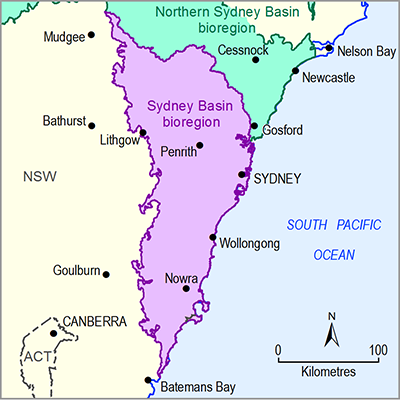- Home
- Assessments
- Bioregional Assessment Program
- Sydney Basin bioregion
- 1.1 Context statement for the Sydney Basin bioregion
- 1.1.3 Geology
- 1.1.3.5 Potential basin connectivity
The Sydney Basin bioregion is connected to the Hunter subregion of the Northern Sydney Basin bioregion in the north, where no geological constraint separates these two bioregions. Individual coalfields in the Hunter subregion are also in the Sydney Basin bioregion. The shallow basement high of the Mount Coricudgy Anticline represents the structural divide between the Sydney and Gunnedah basins, although there is similarity in stratigraphy (Danis et al., 2011). This similarity is reason to assume that there is a direct connection remaining between the two basins, although structurally disrupted to varying degrees. The Sydney Basin sits unconformably on the older Ordovician, Silurian and Devonian basement rocks towards the south (Packham and Day, 1969). The eastern portion of the Sydney Basin sits on the older rocks of the offshore extension of the New England Fold Belt (O’Neill and Danis, 2013). The Blue Mountain and Illawarra Shelves (western Sydney Basin) are atop the underlying Lachlan Fold Belt which is predominantly metamorphic, volcanic and intrusive rocks of low hydraulic conductivity (Brakel, 1991, p. 11). The central portions of the basin are also thought to sit on top of the Lachlan Fold Belt (Brakel, 1991, p. 11). The Upper Carbonifeous to Middle Triassic rocks of the Hunter subregion (northern Sydney Basin bioregion) overlie rocks of the New England Fold Belt (Brakel, 1991, p. 11). The basin is further constrained offshore by the edge of the continental shelf to the east.
See Section 1.1.4 for details about the hydraulic connectivity of the basin in greater detail, with reference to groundwater-geological interaction.

